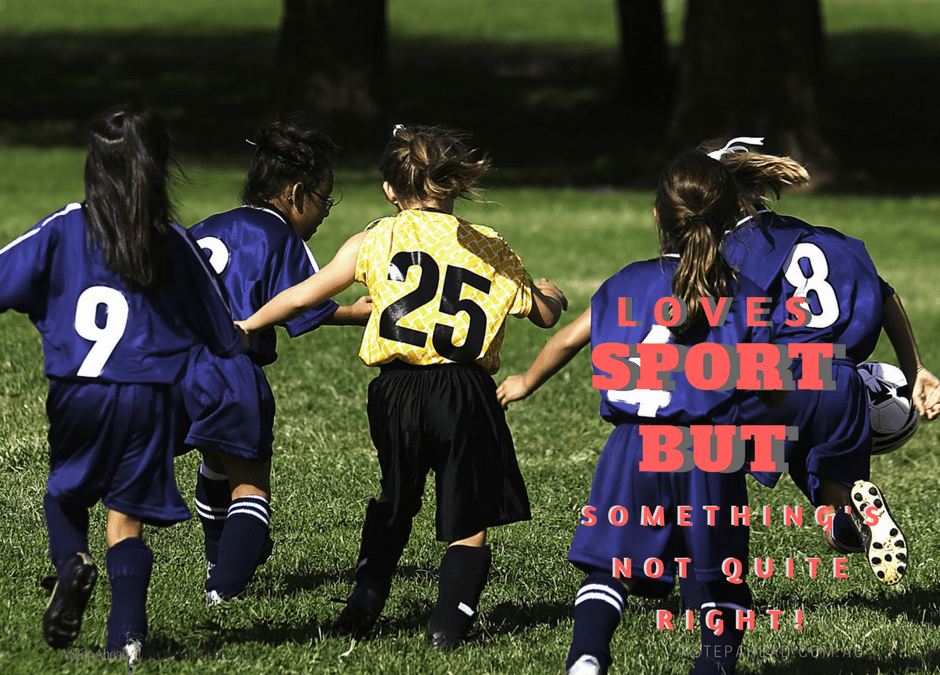
Blog, Heel Pain, Kids Feet, Sports Care
He’s just not as fast as the other kids, and limps a little after games! I thought it would just go away but it seems to be getting worse
Sound familiar?
Ashley came to see us after a frustrating 4 weeks of Heel Pain for mum and daughter alike. Stretching and Rest had been prescribed by her physio, but to no effect! The GP said ice, but It just wasn’t getting better and Ash didn’t want to loose her spot in the team. Our telephone rang and on the end of the phone was an incredibly frustrated mum. Kristy our superstar behind the desk made some room in our appointment book and we got Ashley in to our clinic.
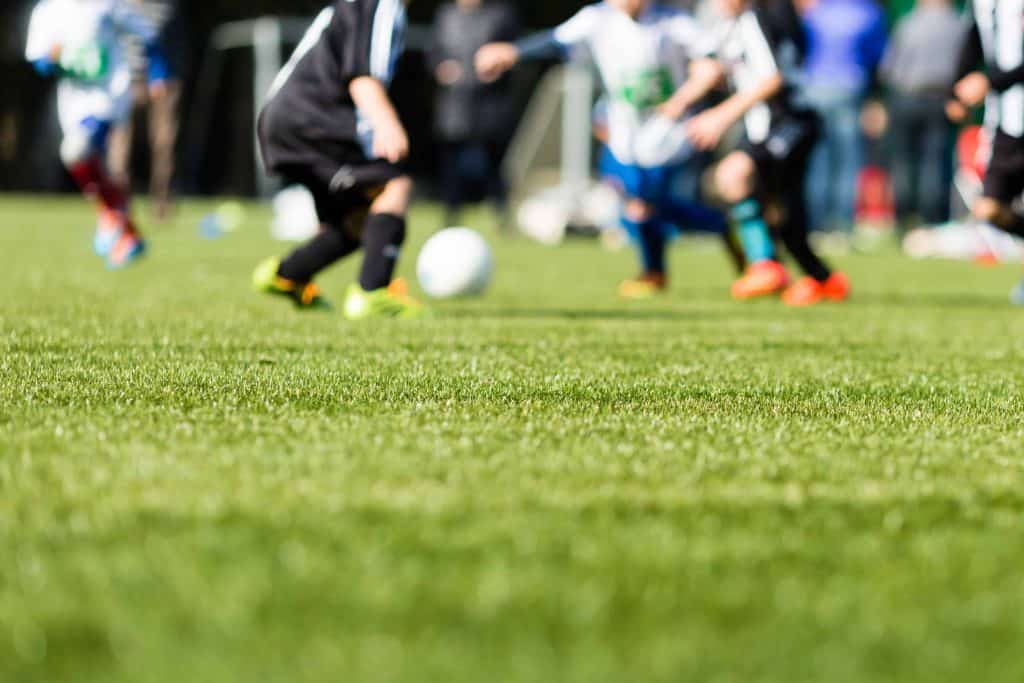
Winter is ball sport season and its also the season we see an increase in Kids heel pain!
Week one was a biomechanics and gait assessment (Walk run and standing assessment) by the team, (Yes we work as a team!!) gathering as much data (Info) about Ash’s foot, her walking and running style and her muscle profiles. We took a 3D laser scan of her feet and moved her out of her old slip on casual shoes, into some newly minted Asics Nimbus, giving her support and cushioning in every step.
Wow what a difference a week makes! We had a beaming Ashley walk into our clinic with a noticeable spring in her step!
Kids heel pain is most commonly an inflammation at the growth plate at the back of the heel, or underneath the foot at the insertion of the fascia. In Ashley’s case, it was the backs of her heels at the insertion point of the Achilles Tendon.
We started our course of soft tissue rehabilitation, which included a series of deep tissue massage, and some manual stretching and mobilisation of the foot and ankle joint.
Ashley’s muscles in the backs of her legs were incredibly tight, playing tons of sport and not warming up before and stretching after will do that to you! So we put in place a series of really simple and quick stretches and exercises for Ashley to do on the court before and after her games and trainings. It wasn’t easy to change her habits but after she saw improvement in her pain, she stuck to the plan. Mum and Dad even got in on the act! A fit happy healthy family!
Four further weeks of manual therapy, custom made orthotic intervention and a tailored return to sport program (plus some stern words about her shoes) and Ashley was back full time on the court. Why is this? An accurate diagnosis, more than one modality of treatment (Soft tissue rehabilitation) and a girl that really really wanted to get better!
Exercise induced heel pain in young athletes is an all too common thing, but 100% treatable! An assessment from your Penrith Sports Podiatrist will have your young star back on the footy field or netball court in no time.
We have been seeing kids like yours for many years! In fact we see children just like yours from all over Sydney, from the Eastern suburbs to North shore, from as far as western NSW to Wollongong. We would love to help keep families Happy Healthy and Active! If you would like our help getting there please call us on 96732987 or 47322007
A Step Ahead Foot + Ankle Care Team
Penrith , St Marys
and coming soon to a suburb near you.

Blog
DeFEET your HEEL PAIN!
1. If it HURTS, stop doing it! Pain is actually your body’s way of telling you that something is wrong – listen to it! Putting pressure on a (painful) damaged muscle/tissue/bone = further damage = no improvement = ongoing pain. It’s as simple as that.
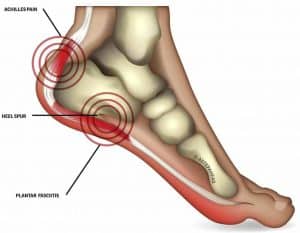
2. Nothing will change unless YOU change it. You’ve been wearing the same shoes and trying the same stretches and whatever else google has advised you since your pain started and you’re still in pain. Consult a practitioner that specialises in heel pain – not all podiatrists and practitioners do! Look for a practice with a proven track record with heel pain – different practitioners do things very differently and get very different results!
3. STICK to the plan! “It’s only when people venture off the main path in the forest that they get lost and chased through the forest in the night.” As practitioners we don’t tell you things to try and make your life difficult and play ‘let’s test if anyone will actually do this’. We do this because we KNOW it works and see it working all day every day, for those who stick to it. If we could make it easier, we would! But taking shortcuts hasn’t produced good results for our patients, and you came to us to get you pain-free.
4. Understand what is happening! Make sure you completely understand: what your condition is, what causes it, what aggravates it, WHY you are having the treatment you are and what the treatment is actually doing to and for your feet. If you don’t see a purpose to doing something, you are a lot less likely to stick to it. Not being fully informed about your condition can create uncertainty about your treatment. Ask all the questions, ask them as many times as you need, and let your practitioner help you to understand. If you get a generic answer along the lines of “It’s plantar fasciitis and you need these very hard orthotics” – Our number will be at the bottom!
5. Finally, DON’T give up! Whether you’ve just started your journey to being pain-free or have tried multiple options from different practitioners with no success, very seriously, don’t give up! We are often people 3 or 4th opinion – some have been to physiotherapists, specialists, GP’s and other podiatrists – if they haven’t had success with you, sadly you’re not alone! I have the privilege of seeing the pain levels of my patients decreasing every week until the pain is gone. Every foot is different, the causes of heel pain are different, and when this is correctly analysed, diagnosed and treated, amazing things can happen. Our treatment is VERY different!
These are my top 5 because I see these so often! It’s actually fairly unusual to see anyone who isn’t struggling with at least one of these points. But rest assured – heel pain can be defeated, you don’t have to keep battling it and letting it limit your activity and you can be completely pain-free. We have patients who regularly travel from all across Sydney NSW and even interstate to see us! Its not unusual for us to be the last of a long line of other practitioners you may have seen. Come and join our ever-growing team of pain-free patients – we’d love to help you too!
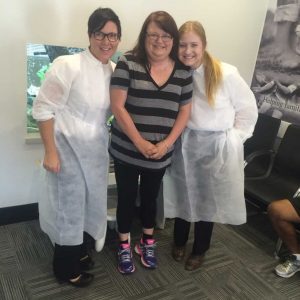
Dr Nina to the right and Shendi on the left with our patient Kimberley who beat heel pain!
A Step Ahead Foot + Ankle care
Penrith, St Marys
and soon to come to a suburb near you!

Blog
- Needing a pair of orthotics?

- Heard mixed messages on how effective they are?
- Aren’t they all the same anyway?
If you’ve ever even CONTEMPLATED getting orthotics – read this first!
Let me start by answering a question that goes through almost all of my patients minds at some point – nope, orthotics are definitely NOT all the same and when the right orthotic is properly designed for my patients foot using the right materials and design skills that come from years of experience (and very honestly, learning from previous mistakes that others are still making today), yes they ABSOLUTELY do alleviate foot, ankle and low-er limb pain.
In fact, orthotics couldn’t be more different – and in many ways, they should be! Let me explain while answering a few concerns I often hear:
- Are my orthotics going to be like my pair from my previous podiatrist?
- I know someone that has had orthotics before but they didn’t help him?
- What do orthotics actually do?
Let me start in answering these with the first and most important point:
The way your orthotics look and how effective they are are dependent entirely on the skills and preferences of your podiatrist! Yes – your specific podiatrist alone dictates how they are made and using the resources, materials and skills they have available at any point in time. If your podiatrist wants to heat-mold a pre-made, soft, thin orthotic and add a colourful harder piece and call that a custom-made orthotic, then that’s what you get. If you get plaster-cast and the cast gets sent to Canada for a firm, plastic-like device to come back, then that’s the orthotic you get.
What does this mean? Simply and unfortunately put, you may receive a lower quality product (often associated with a cheaper price) that claims to do the same thing, but often fails to produce the same results (pain relief!) and tends to have a shorter shelf-life. Think of it as buying make-up (clearly, this is written from a female perspective). You’re after a lipstick. Sure, you can buy an $8 lipstick from pretty much anywhere, but we know it will never compare to buying a Mac lipstick, that you’ll love and keep using until the very very end.
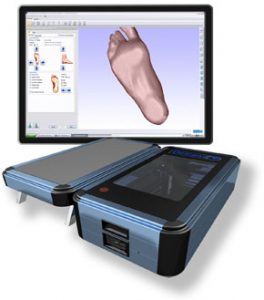
So how do I know if my orthotics will be good? Don’t be afraid to ask! They should be more than happy to talk you through the process – I LOVE talking through our orthotic design and manufacture – from the extensive testing of the range of motion of your foot and ankle joints to muscle strength, foot posture index, video gait analysis and 3D laser scanning your foot! But that’s only the part you see – it all then collides when our principal podiatrist and founder, Brenden Brown, designs every single one of our patients orthotics (yes, over all of our clinics!) himself, using his 20 years of experience and the widest range of materials I’ve ever seen as a podiatrist. BUT THEN, our CAD/CAM milling machine actually mills out the base of your orthotic, all in our VERY OWN (and very exciting!) orthotic lab, and hand finished by our orthotic technicians! It’s safe to say that it’s a little more technical than sticking two bits of material together and naming it an orthotic, and FAR more effective.
Finally, think about what your orthotics do! Orthotics have a FUNCTIONAL purpose to alter the alignment of your foot, changing different pressures and strains over your muscles, bones, joints and exactly where you’re having your pain. They address the CAUSE of your lower limb problems to provide you with long-term relief, and when designed and created right, they do this VERY well.
Happy orthotic hunting!
Dr Nina Lansdowne
Podiatrist and Superstar Blog writer
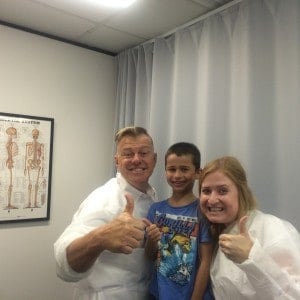
Dr Nina , BB and a good looker who happens to be our patient!

Blog
Standing occupations and what happens to feet!

Busy looking people!
Most of us stand or walk everyday but amongst us there is a proportion of our population that do it more than others. We are talking to you Nurses, Builders, Hairdressers, Concreter’s, Teachers, process line factory workers and Check out operators and, and, and and! You guys know more than anyone what a toll standing for hours can do to your feet. Below is a very quick description of some of the more common problems you may have suffered and things we as foot specialists see day in day out and help to treat.
Plantar plate tears / injuries / dysfunction
Is this you? (What it can look like)
• Do you have pain in the ball of your foot? Is it worsened when you stand or possibly wear shoes?
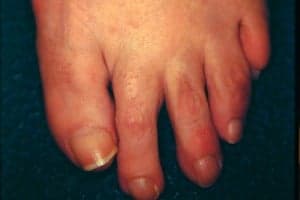
• Have you developed the feeling of a lump or a little pea under the ball of your foot?
• Is there dry hard skin (callus) developing under the ball of your foot?
• Have you noticed a small (or large) gap developing between your toes that resembles “V”? This is often the 2nd and 3rd toes, but it maybe any?
• How did it happen? Do you remember tripping falling and developing a pain in your forefoot (ball)? NO you DO NOT have to have had an accident!
• It may have developed slowly over time with no memory of a painful incident.
We see this many times a week and sadly we often see it misdiagnosed and therefore treated as the wrong problem. It can be misdiagnosed as a Mortons Neuroma or at times when people aren’t sure of things (and for many years) some practitioners diagnose Metatarsalgia .
Remember “Grandma’s feet? You know the ones where her big toe had formed a bunion and the next two toes popped up and crossed over each other? Yes those feet you wished you would never get, and swore you would never let it happen to you! Guess what without having it treated pronto –they soon may be yours!
Correct Diagnosis
A big part of this problem is misdiagnosis! You cant diagnose this if you don’t see a stack of it. As a clinic we will always send you for a Ultrasound BUT not just to anyone! Some radiologists commonly miss this and sadly are not familiar with the condition. Make sure when you are referred to get a diagnosis the radiologist knows and has diagnosed Plantar plate tears before!
Clinically your podiatrist should be able to see this quickly but it can be tricky and some Pods are more equipped for general nail care. Choose someone who sees this regularly! ASK!
Treatment
Strong supportive footwear is a key here! Shoes should be solid on the base not bend or twist. Cushioning this condition with fancy air bubbles WILL NOT fix this!
Orthotics (Custom made) – Well-made and designed orthotics will assist poor foot posture and correct alignment. They cannot come out of a packet and fix this, they need to be designed to help address this.
Soft tissue therapy – This condition is often slated straight to surgery STOOOOOOOOP! Unequivocally this condition has a good prognosis with conservative therapy trail first! We see this condition many times a day and get great success. Now we realise not all Pods do soft tissue like we do (Come on pods get to it!) but this is really necessary to go hand in hand with your Orthoses. Orthoses alone WILL NOT fix this. If your Pod wont do soft tissue then find a physio who will!
Surgery. Yes if this condition progresses to an unresolvable tear there is a need for us to refer you to an orthopaedic surgeon for surgery. SURGERY is A LAST resort! On most occasions surgery can be avoided with early quality intervention. As a note we worry about the amount of these we see that have unnecessarily sent to a surgeon. Many times way too early and before conservative care I has been trailed correctly these patients (you) are sent to surgery!
Heel pain
Is this you? (What it can look like)
• Pain on the first few step in the morning or pain on rising after sitting (Or Both)
• Pain Located in the heel area, under the heel where the slightly fatty area is, or pain in the Achilles running up the back of the lower leg.
• Pain may initially subside in first stages after first few steps
• Pain worsened by long period on your feet may become painful after walking or activity for reasonable periods of time.
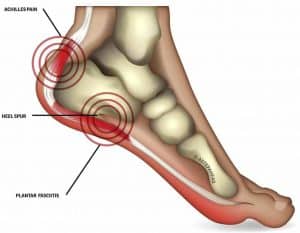
Correct Diagnosis
The first thing your friends will tell you is “It’s a Heel spur”. Sadly life is not that simple and where once medicos lumped this into one general diagnosis (Sadly some still do). We recognise that this set of symptoms may be one of many conditions. Plantar fasciitis, fatty pad syndrome, Achilles tendonitis, and even Abductor Hallucis tendonitis can contribute to this pain. Find a practitioner who knows the difference! Again not all practitioners see these things a lot.
At times simple clinical signs are enough, but diagnosis maybe needed via radiology such as diagnostic ultrasound. Xray will show you a spur (Yes I know) but the bony spur is NOT the problem.
Treatment
Strong supportive footwear is a key here yet again ! Shoes should be solid on the base not bend or twist. Cushioning this condition with fancy air bubbles WILL NOT fix this!
Orthotics (Custom made) – Well-made and designed orthotics will assist poor foot posture and correct alignment. They cannot come out of a packet and fix this; they need to be designed to help address this.
Soft tissue therapy – Deep connective tissue massage, will be useful in all the above conditions. Again be wary of people simply telling you that orthotics will get rid of this. They go hand in hand but are not the only answer.
Shockwave – As a clinic we have been using shockwave for about 3 and a half years. As we are “early adopters” of new therapies, this is not as common to other practitioners but the use of this therapy is very handy and growing in popularity. We find this takes half the time that Deep connective tissue does to relieve this in combination with the other therapies.
Stretching – there are some very specific stretches that can be used for this group on conditions and for a large group of individuals this will help. Don’t be discouraged if these don’t work. Look above there are more options and solutions.
Tibialis Posterior dysfunction.
(Super flat feet / Fallen arches)
Is this you? (What it can look like)
• Pain in and around the arch. May be worse after walking or standing
• Discovering you have a “Fallen arch”
• Noticing one arch is lower than the other.
• Pain fatigue during or after walking. Pain on standing on toes ,climbing ladders.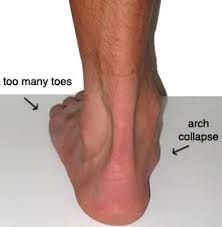
Correct Diagnosis
This should be fairly easy to diagnose. The lowering of one arch, as opposed to the other, in combination with pain located in the arch. Should lead to an easy diagnosis. Diagnostic Ultrasound maybe used and your Podiatrist (us) can refer you off for this.
Treatment
Strong supportive footwear is a key here yet again and now again ! Shoes should be solid on the base not bend or twist. Cushioning this condition with fancy air bubbles WILL NOT fix this! (Can you see a pattern)
Orthotics (Custom made) – Well-made and designed orthotics will assist poor foot posture and correct alignment. They cannot come out of a packet and fix this; they need to be designed to help address this. IN particular without orthoses this condition WILL NOT get better! Get them and GET THEM QUICKLY!
Soft tissue therapy – Deep connective tissue massage, will be useful in all the above conditions. Again be wary of people simply telling you that orthotics will get rid of this. They go hand in hand but are not the only answer.
Braces – In the initial stages having braces specifically designed to support the arch will support and make steady the arch. It works well at first but is really a short term solution. Look towards orthoses and soft tissue.
Surgery. Yes if this condition progresses to a tear there is a need for us to refer you to an orthopaedic surgeon for surgery. On most occasions surgery can be avoided with early quality intervention.
Bunions
Is this you? (What it can look like)
• Your big toe starts to point out towards the smaller toes and is no longer straight
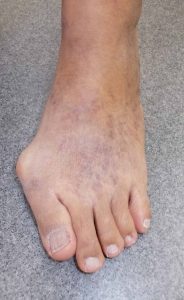
• Pain may develop around the big toe joint. Making it difficult to walk or stand
• Many people can have a bunion and not have any pain.
• The toe may begin to twist as well
Correct Diagnosis
On most occasion a qualified health practitioner should be able to diagnose this simply by looking at the clinical signs, however you may require a xray if you are considering surgical intervention.
Treatment
Strong supportive footwear. (Wow we just wont stop talking about this supportive footwear will we!!!) Shoes should be solid on the base not bend or twist. Cushioning this condition with fancy air bubbles WILL NOT fix this! (Can you see a pattern)
Orthotics (Custom made) – Well-made and designed orthotics will assist poor foot posture and correct alignment. This problem is often a result of a variance in the structure of your feet Yet again these cannot come out of a packet and fix this; they need to be designed to help address this.
Soft tissue therapy – Deep connective tissue massage, will be useful in all the above conditions. There is a problem with the balance of two muscle in your feet. This can also lead to another condition that may damage other muscles and soft tissue structure, the plantar plate rupture or dysfunction. Again be wary of people simply telling you that orthotics will get rid of this. They go hand in hand but are not the only answer.
Braces – Often called night splints there is some research that suggests these can be really helpful. I (Brenden) am a little dubious! This relies on you being super diligent on putting the splint on night after night. I always argue that on a Friday night after a busy week and a catch up with the girls after work it’s not likely you’ll want to pop this on before heading to bed. This is where the success of these will fall down BUT if you are super diligent, give them a try.
Surgery. Yes if this condition progresses there is often a need or want for us to refer you to an orthopaedic surgeon for surgery. This surgery over years has increased in its success. See a orthopod who does this all the time. Why ? Because ensuring that the person does this and other foot surgeries often increases the chance of success. If they are also doing shoulders knees hips wrists etc etc they simply cant be as use to doing this surgery as someone who does this every day.
The HARD sell !
At A Step Ahead foot + Ankle care we see several patients a day with this condition. We have patients that travel literally hundreds of kilometers to seek our help –which is really lovely! Our clinics are set up quite specifically to treat patients with muscle injuries and mechanical problems with their feet. We have invested hundreds of thousands of dollars into equipment and the latest technology to help us, help you- beat your pain.
Our principal Podiatrist Brenden Brown is recognized as one of Australia’s leading experts in Podiatry (No really). A past President of the Australasian Podiatry council he is regularly asked for his opinion in the media, appearing regularly on television shows like the Today Show and Magazines like Men’s Health.
It would be a pleasure to help you beat your foot pain.
We are located in Penrith and St Marys in Sydney’s Western suburbs. You can contact us on 47322007 or 96732987 we hope you will……. See that wasn’t so bad was it!
Copyright 2015. We take our copyright quite seriously. If you reproduce this without seeking our permission we will be very upset. So upset we will contact our solicitor and instruct them to deal with you. Big hairy scary with a steely glare enormous shoulders and a square jaw she will take you to task! We will instruct her to take all necessary measures to recompense us for your infringement on our intellectual property and copyright!
If you would like to reproduce this and are happy to acknowledge our company and share a link to our website then we will most likely be happy to allow you to reproduce this, but hey why not ask!

Blog, Uncategorized
“I have these really cushioned shoes” she says with pride!
“The guy in the shop says they will be the best thing they are just so comfortable”
“I bought the best ones they had”
“They worked for a while but now it has come back and it feels just as bad if not worse than it did before”
“I am so frustrated I have tried everything”
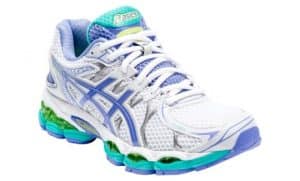
Asics Nimbus for Neutral or higher arched foot types – great supportive cushioning
This is generally how the conversation with many of our patients who first visit us tends to sound like. Why does it sound like you? Because we see “you” …or someone just like you every day. (often 6 – 10 times a day!)
Heel pain and foot pain can be frustrating. It can stop you from doing the things you love. Putting off the plans you have. Tried walking the city to surf with heel pain or for that matter the streets of Greece on that big overseas trip you had planned? Heel pain can be a game changer!
Many people do the very first thing that comes to mind BUY NEW SHOES! From GP’s to nurses to your next door neighbor, people will tell you that new shoes are the way to go and we won’t disagree BUT BE WARNED the choice of shoes is what’s important.
Most very cushioned shoes WILL NOT help you! Our experience of successfully treating thousands of heel pain patients says, a shoe that has a firm shell with a small amount of structured cushioning is what works best.
Footwear for heel pain needs to be more supportive. We have found that cupping the foot with a firm heel counter (The very back part of the shoe). Supporting the foot through the midfoot with a shank, meaning a firm part of the sole, so the shoe doesn’t bend in the middle. When you visit us with your heel pain it’s one of the very first things as practitioners we look at.

Our “got to shoe” of 2014 is the Asics Gel cardio zip 2
Avoid your trendy Nike footwear with large bulky cushioned air bags. Avoid footwear that are super flexible and bend in the middle. Light weight and footwear like “supasoft” and “gel cushioning”. Our experience says these at first these feel ok but quickly become more of a problem than a solution. Don’t even start us on minimalist shoes and barefoot running – a recipe for disaster.
Footwear is only part of a more detailed solution. When visiting A step ahead foot +ankle care we will develop a detailed treatment plan addressing everything from your footwear to soft tissue rehabilitation through to correcting your poor foot posture. Heel pain is a complex problem that won’t go away by itself (it will if you are happy to wait anywhere between 12 month and 5 years). Sadly unlike other conditions unless you are going to stop walking altogether you are going to have to deal with this problem before it will go away.
The podiatrists at A Step Ahead Foot and Ankle Care specialize in lower-limb mechanics and sports medicine. Their podiatrists have been featured on television and in magazines such as Men’s Health, Good Medicine, Prevention and many others. They see more than 15,000 patients every year with foot pain just like yours. The practice has been servicing Western Sydney for over 30 years.
They work closely with a number of General practitioners, Orthopaedic surgeons, Sports physicians and Sports physiotherapists to assist in the treatment of many of their difficult patients. They are also the podiatrists that other podiatrists refer to when they need someone to work with their complex patients.
You can contact A Step Ahead Foot + Ankle care on 96732987 or 47322007 to make an appointment.























 Dr Brenden’s White paper report on the “6 Reasons You Won’t Beat Heal Pain” outlines what’s stopping you from beating this and tips on how to stop it in its tracks!
Dr Brenden’s White paper report on the “6 Reasons You Won’t Beat Heal Pain” outlines what’s stopping you from beating this and tips on how to stop it in its tracks!